We’re thrilled to share we will now be offering Retül bike fits across two of our locations – Colchester and Norwich. We’ve pulled together our top five reasons why bike fits are for every type of rider, not just professionals or serious riders. Our geometries are constantly changing, especially as we age, and this should be reflected in your bike fit and how you interact with your bike. So here are 5 reasons why a bike fit is for every rider, and perhaps in conjunction with a fit at one of our Retül locations, you should start enjoying your time on the bike and having even more fun.
1. Humans are asymmetrical, bikes are symmetrical.
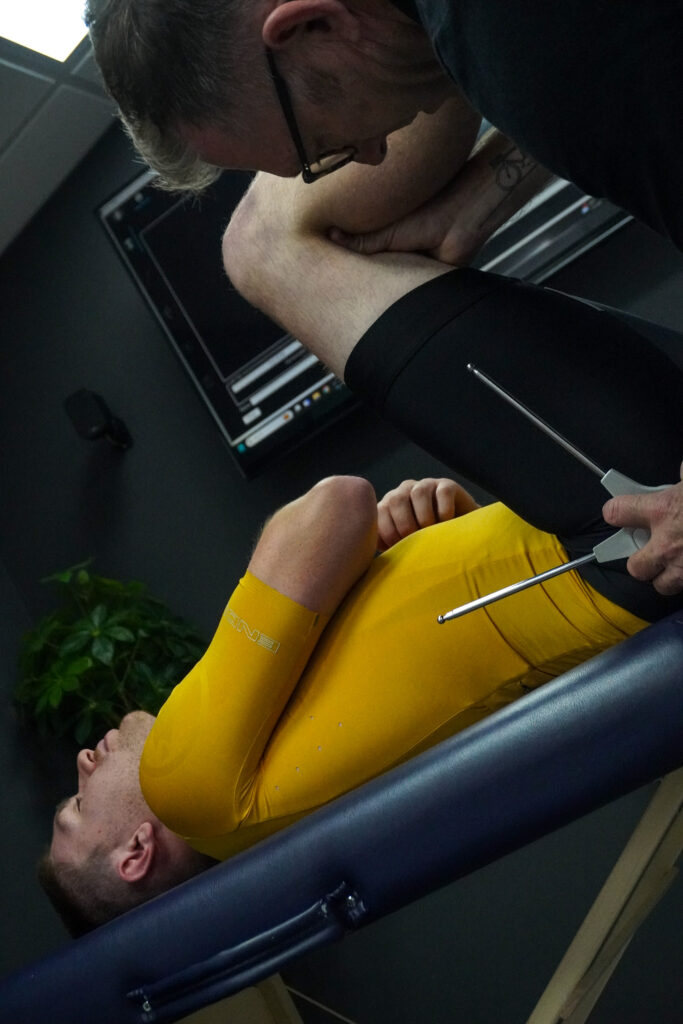
Many riders possess natural anatomical asymmetries that can lead to discomfort during cycling. For instance, it’s common for cyclists that we have seen over the years to have one leg longer than the other. This difference often results in one knee bowing out, or over-extension of one leg, which can cause knee pain and feelings of inefficiency while riding. More importantly, it can also raise the risk of injuries. The primary goal of a bike fitter is to make precise adjustments to the bike that help compensate for these asymmetries, enhancing both comfort and performance.
Retül 3D motion capture technology allows us to pinpoint these asymmetries down to the millimeter and tailor the bike to you, the rider. You might wonder, “Do a few millimeters really matter?” In our experience, absolutely. Consider this: if a cyclist slightly overpronates by 5mm on their right side and cycles for 10 miles over 45 minutes at an average cadence of 70rpm, their right leg travels nearly 55 extra feet more than their left. So, indeed, those few millimeters can significantly impact the cycling experience. These are all-natural asymmetries; humans were never designed to ride a static symmetrical bike. Our aim is to make you as economical as possible. Imagine how powerful and efficient you could be if all that effort was evenly distributed!`Retül 3D motion capture technology allows us to pinpoint these asymmetries down to the millimeter and tailor the bike to you, the rider. You might wonder, “Do a few millimeters really matter?” In our experience, absolutely. Consider this: if a cyclist slightly overpronates by 5mm on their right side and cycles for 10 miles over 45 minutes at an average cadence of 70rpm, their right leg travels nearly 55 extra feet more than their left. So, indeed, those few millimeters can significantly impact the cycling experience. These are all-natural asymmetries; humans were never designed to ride a static symmetrical bike. Our aim is to make you as economical as possible. Imagine how powerful and efficient you could be if all that effort was evenly distributed!
2. Feet are your foundation, invest in them.
Wearing the incorrect size and style of shoe for your feet is one of the most common issues in our fitting studios. We often see riders who have chosen shoes based on aesthetics, compromising both fit and comfort in the pursuit of good looks. Finding the best shoes that work for you is covered in our fitting process, and it is key for your feet to feel secure, comfortable, and pain-free.
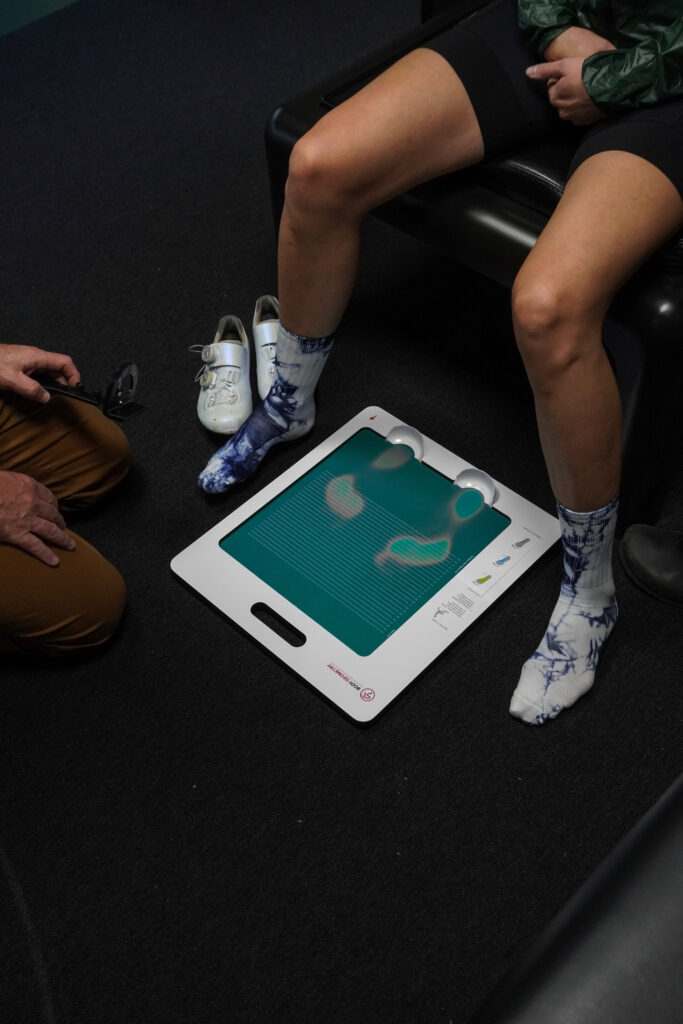
For instance, a foot without proper support can lead to misalignment of the foot-knee-hip axis, resulting in decreased pedal power and stability, as well as a higher chance of injury. Hence, foot support is crucial. After discussing your initial shoe setup, we will evaluate the feet to measure their movement in 3D space with the Retül software. This helps in determining the necessary stabilisation and support required.
Imagine living in a house built on an uneven foundation; would you feel secure sleeping on the third floor? This analogy parallels how our bodies function. Since the feet act as the foundation of our body, inadequate support for them can lead to a domino effect of issues throughout. This is also one reason why we don’t offer a standalone cleat fitting service.
Once an assessment has been completed, we can then look at measures to improve performance. This support can come in various different forms, be it arch support insoles, custom orthotics, heel shims, forefoot shims, or a combination of all. Pedal and cleat interaction form the final pillar of your foot’s contact with the bike. Ensuring you have the correct pedal system for your riding, and subsequent cleat location in the most efficient place, can significantly improve your comfort and enjoyment when out riding.
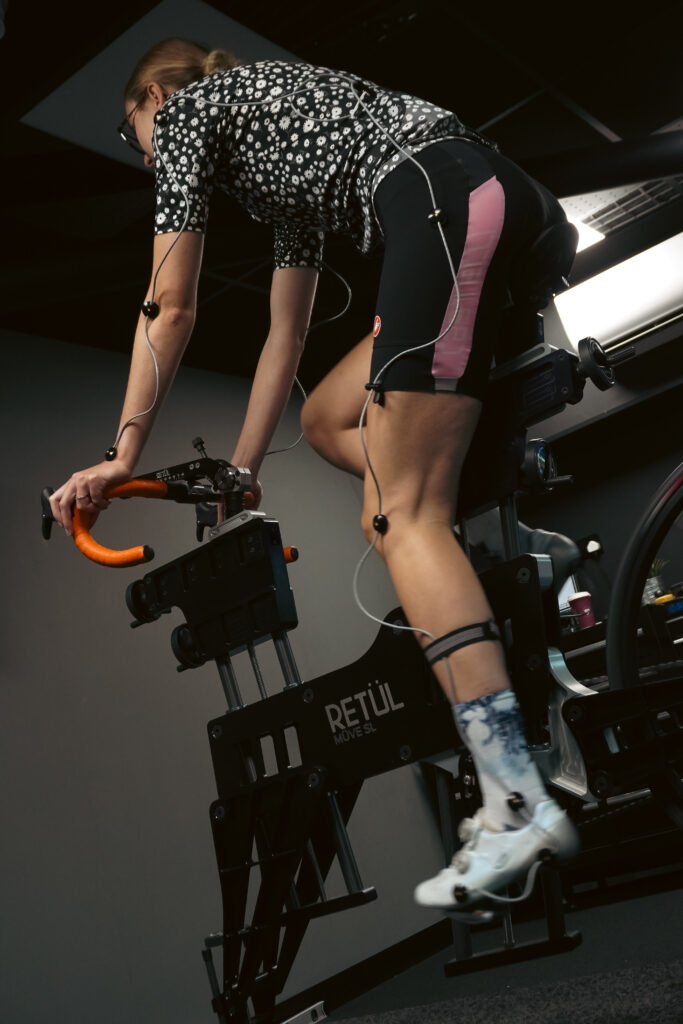
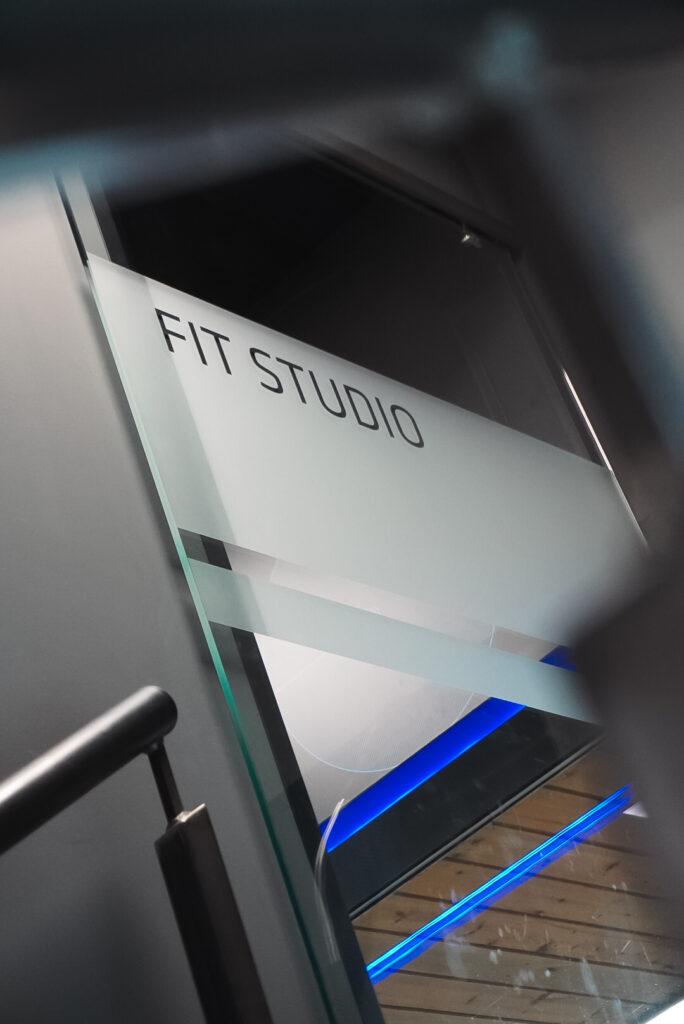
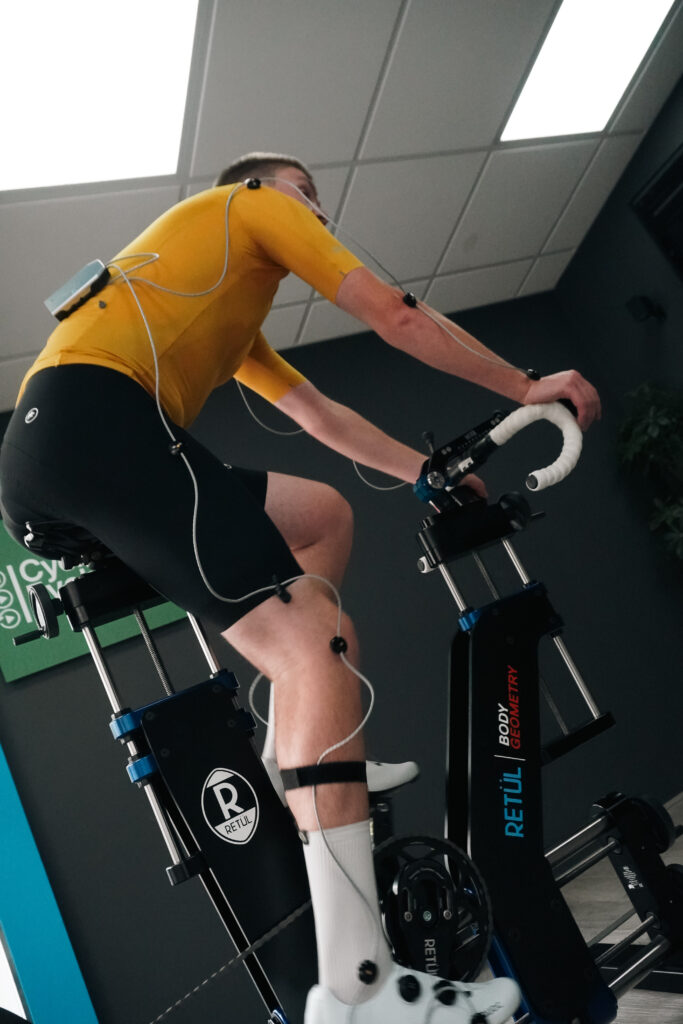
3. The hips don’t lie!
Regardless of how plush the saddle padding might seem or the testimonials about the best saddle from friends next door, if your “sit” bones aren’t properly positioned, that saddle is bound to become a genuine source of discomfort. A thorough fitting involves an initial conversation with you to gather relevant details. So please be as honest as possible, even if the truth is ‘uncomfortable’! Combined with our Retül Digital Sit-bone Device (DSD), this information lets us rely on data to select a scientifically appropriate saddle.
When the saddle is the incorrect width, either too wide or too narrow, you may end up sitting on soft tissue areas, leading to hip and spine twisting. The DSD digitally assesses the width of your sit bones to accurately determine the optimal saddle width for each individual. With our fitter’s saddle library, we can then test a recommended range of saddles to assess comfort and how this impacts your fit.
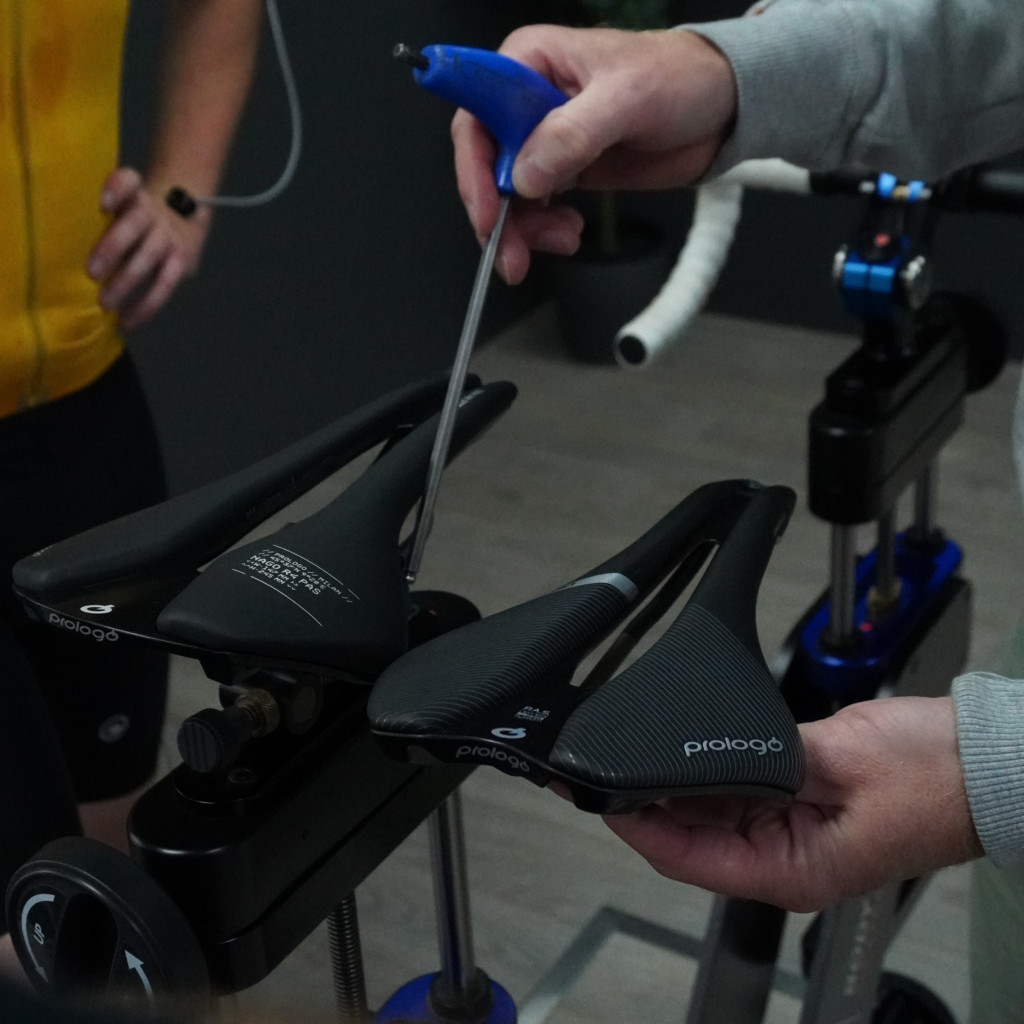
However, it is not *just* the saddle. Height is a pivotal part of the equation which needs to be determined accurately. If the saddle is set too high, it can result in the hips rocking and twisting. On the other hand, a saddle set too low can lead to excessive knee strain. Setting the saddle height isn’t just about leg length; it’s also about flexibility. In our pre-fit assessment, we will complete a range of small tests aimed at determining levels of strength and flexibility. For example, tight hamstrings tend to pull the pelvis to a more upright position, causing you to bend at the lower back and revert to sitting on “soft” tissue. So there is a lot to cover!
The comfort of your neck, hands, and shoulders serves as an indicator that your feet are properly supported, you’ve chosen the right saddle, and your cleats are positioned correctly. However, adjustments to your handlebars and stem might still be necessary to address issues like numb hands or a sore neck. Often, alleviating pressure from your hands and shoulders can resolve numbness. Adjusting the height of your handlebars by raising or lowering them, or altering the length and angle of your stem can effectively redistribute your weight and ease discomfort in your hands.
4. Hand position is the product of a good bike fit.
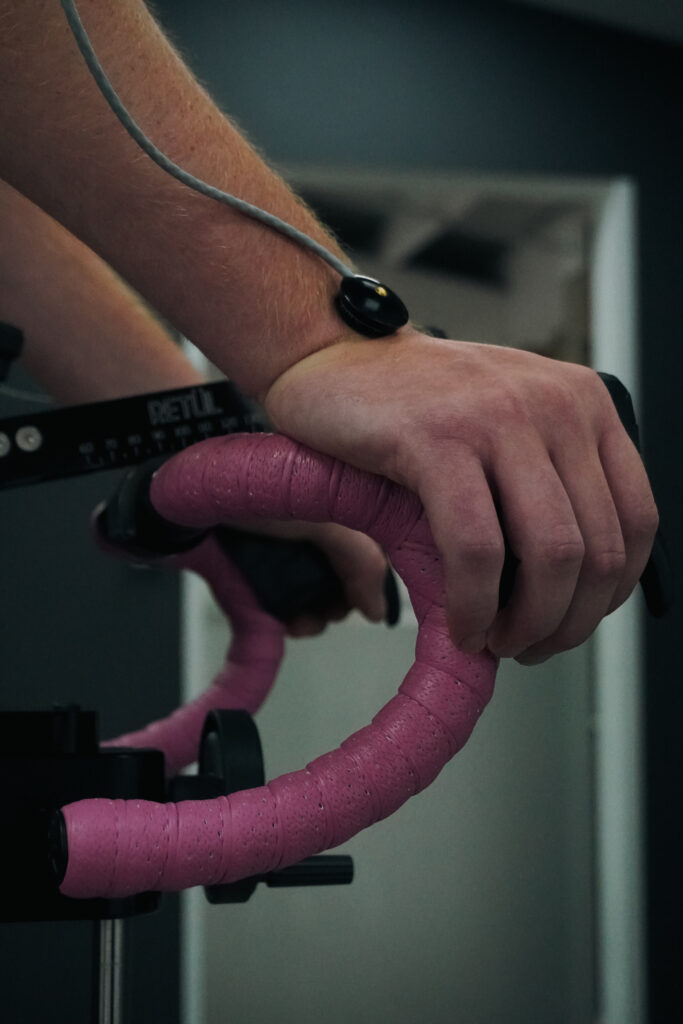
We avoid setting the joints to be completely straight and extended, similar to the posture of Frankenstein’s monster. Rather, we aim for a natural arc in the arms when reaching for the handlebars. Picture the motion of raising your hand to shake someone’s hand; in this case, though, your target is the handlebar instead of a hand. It’s crucial to maintain a neutral alignment from the forearm to the hands, ensuring that the wrist isn’t angled or bent awkwardly. To achieve this alignment, adjustments might be needed in the rotation, position, or shape of the shifter hoods. Using the Retül move bike, we can make these adjustments on the fly and see differences in real time.
5. One fit is not for life. Get your fit checked annually.
As we age, our bodies go through changes that make the fit of our bikes a dynamic aspect to consider. Flexibility and adaptability evolve with time. Youth typically brings with it a greater degree of flexibility and the ability to adapt easily. However, as time goes by, we face wear and tear, injuries, and the repercussions of prolonged sitting. These factors can influence your balance and lead to stiffer joints. There’s no single perfect bike position that applies forever; instead, there’s an optimal saddle height, saddle setback, and handlebar reach that suits each stage of life. Keeping your bike fit up to date is vital for ensuring that you continue to ride with the highest level of efficiency, safety, comfort, and enjoyment. If you last had a bike fit in 2018, and are looking to replicate those details onto a new bike, then we would highly recommend a new fit to ensure optimal setup and sizing of your new steed!
Social Media user? Follow us to keep up-to-date and see more informative content.
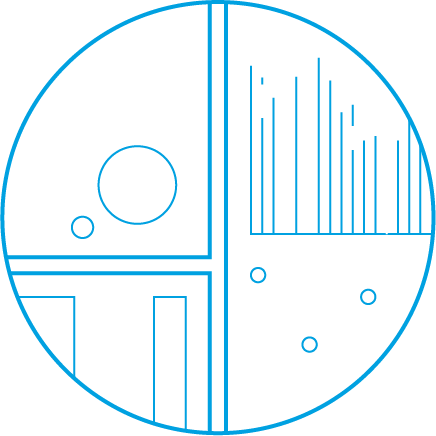
Precision
Customisation
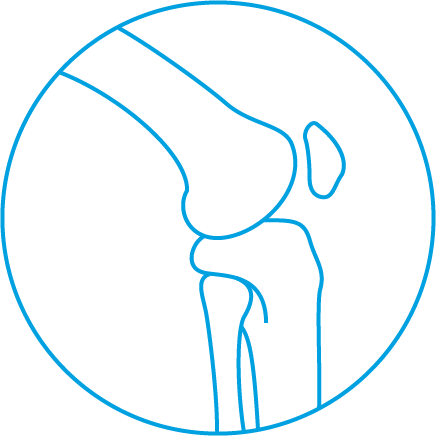
Injury & Numbness
Prevention
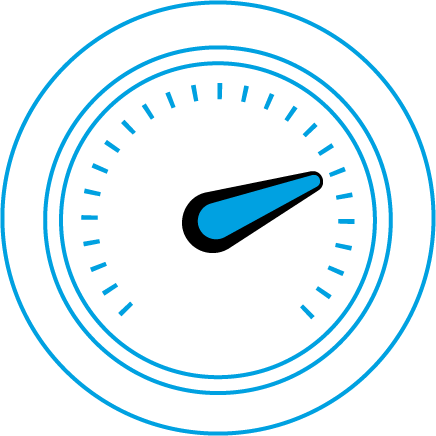
Performance
Optimisation
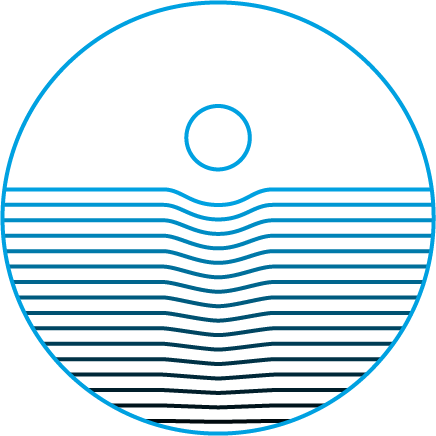
Enhanced
Comfort

